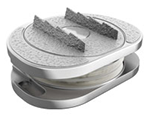For L5-S1 spinal issues, disc replacement aims to preserve motion by replacing the damaged disc with an artificial one, while spinal fusion aims to stabilize the spine by fusing the vertebrae together, potentially limiting movement.
Disc Replacement:
- Goal:To restore motion and function by replacing the damaged disc with an artificial one.
- Procedure:The surgeon removes the damaged disc and replaces it with an artificial disc, designed to mimic the natural disc’s function.
- Pros:Preserves natural spinal motion, potentially leading to better long-term outcomes and reduced pain.
- Cons:The artificial disc can move out of position or fail, and the procedure carries risks like infection, nerve damage, or bleeding.
- Recovery:Typically faster than spinal fusion, with patients often able to return to normal activities within weeks.
Spinal Fusion:
- Goal:To stabilize the spine by fusing the vertebrae together, eliminating movement at that level.
- Procedure:The surgeon removes the damaged disc and fuses the vertebrae together, often using bone grafts and/or metal hardware.
- Pros:Provides stability and can effectively reduce pain caused by instability or degenerative disc disease.
- Cons:Limits spinal motion, potentially leading to increased stress on adjacent spinal segments and a higher risk of future problems.
- Recovery:Longer and more intensive than disc replacement, with patients typically needing several months to recover.
Factors to Consider:
- Type of spinal condition:Disc replacement is generally considered for patients with degenerative disc disease or pain related to disc problems, while fusion is preferred for instability or when multiple levels are affected.
- Patient’s age and activity level:Younger, more active patients may benefit more from disc replacement, while older or less active patients might be better suited for fusion.
- Surgeon’s experience:The surgeon’s experience with both procedures is crucial for determining the best option for the patient.
- Long-term goals:Disc replacement aims to preserve motion, while fusion aims to stabilize the spine, so patients should consider their long-term goals and activity levels when making their decision
